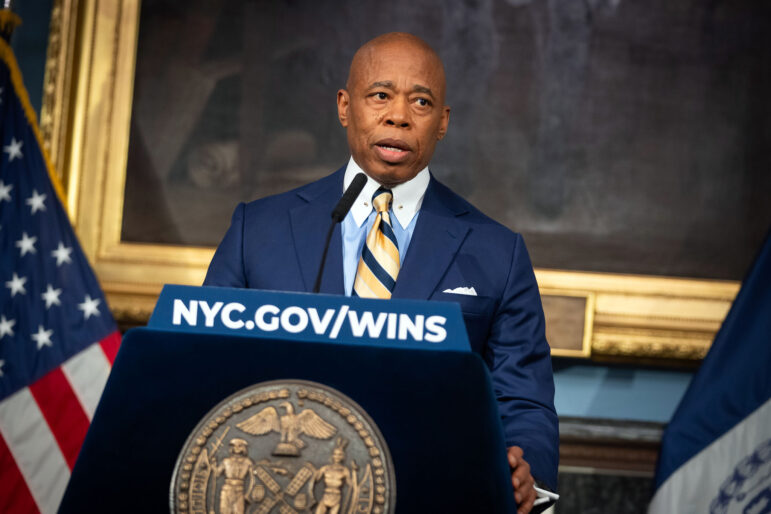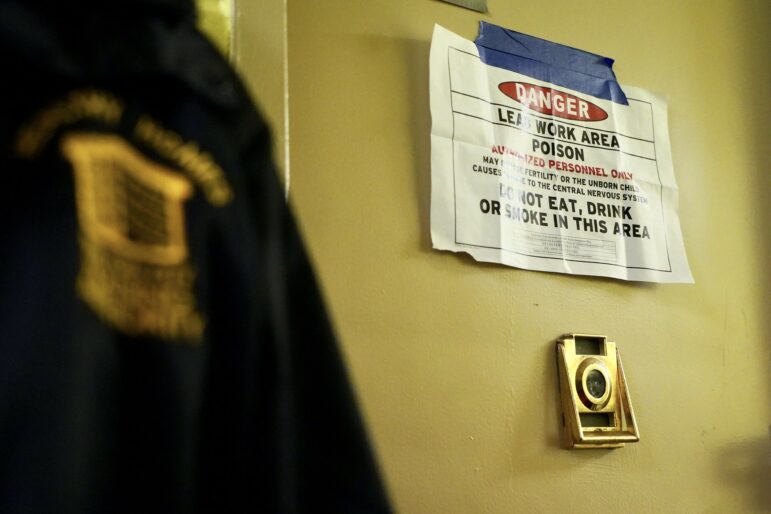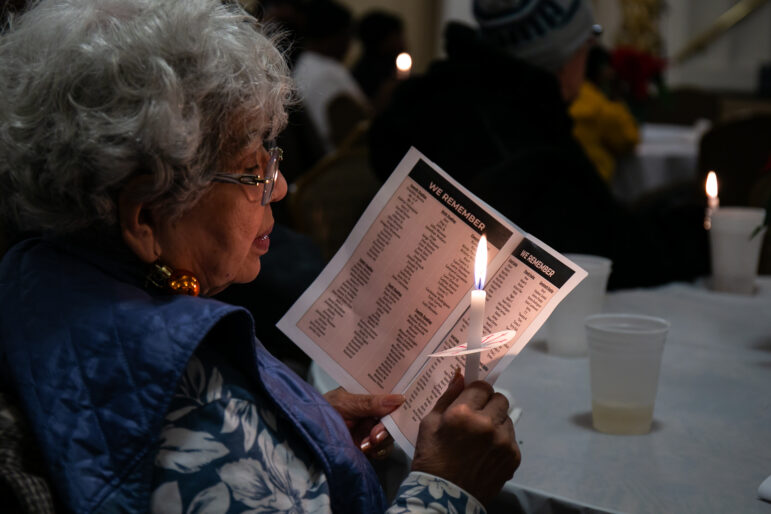Imagine buying a brownstone in an up-and-coming neighborhood like Clinton Hill or Crown Heights, and pouring $25,000 worth of repairs into your new house–only to be told, after all the time and effort, that your home’s market value is basically the same as or even less than what you paid to acquire and restore it. Imagine that this crucial decision about the value of your home was made in a matter of hours by a suburban property appraiser who visited your neighborhood for the very first time, took a look around and wrote “Questionable character of residents” as a reason to knock down the value of your house.
That’s exactly the scenario being played out in New York City and throughout the United States. Families and community organizations are taking on the difficult task of acquiring and rehabilitating property and turning their neighborhoods around–only to have their work undone by a property appraisal process that is extremely subjective, often arbitrary and in some cases openly discriminatory. All too often, in communities of color, skewed appraisals knock property values down just as revitalization is beginning to take hold.
It is common for homeowners to take equity loans against the value of their property in order to start or expand businesses, make home repairs, send their children to college or even buy other homes and buildings. Undervaluing property in inner-city neighborhoods means those areas are denied a much-needed source of capital that would otherwise contribute to economic revitalization.
In recent months, studies and articles on the subject have begun to appear, revealing a problem of national dimensions.
In Springfield, Massachusetts, a Latino community development organization poured more than $70,000 into a residential property and was preparing to sell it to community residents, until an appraiser determined that the property–even after the improvements–was “objectively” worth only $30,000. This made it nearly impossible for the group to find a buyer. No bank would lend a family $70,000 to buy a home that an appraiser said was worth less than half that cost.
In rural Arkansas, the Elk Horn bank–a community development bank affiliated with Chicago’s Shorebank–has been criticized by government bank examiners for investing in properties that appraisers said weren’t worth the value claimed by the bank. Instead of approving the bank’s efforts to buy and improve distressed properties, the examiners warned Elk Horn against endangering its capital by placing funds in substandard investment that is, “substandard” as defined by outside appraisers who decided the finished project wasn’t worth as much as Elk Horn claimed.
An appraiser is a licensed, professional estimator of the worth of a piece of real estate. He or she considers seemingly objective factors like the recent prices paid for similar or comparable properties in the same neighborhood. They are also expected to use their subjective opinion of the quality and desirability of a neighborhood in determining the value of a property.
In theory, any two licensed appraisers are supposed to arrive at much the same value for any given home. In reality, however, appraisers can reach wildly different conclusions, especially when it comes to interpreting the “quality” of a neighborhood–its schools, commercial life, availability of parking, proximity to transportation and so forth. These subjective decisions can have enormous economic consequences because banks, real estate brokers and insurance companies use appraisers’ figures to make crucial decisions about whether or not to approve loans.
A bank, for instance, usually won’t lend $80,000 for a home if an “objective” appraiser determines the property is only worth $50,000. Even if the homeowner finds a buyer willing to pay $80,000, the bank can end up killing the deal or forcing a sale at a lower price.
The devaluation process quickly snowballs. Once a few homes have been sold at low prices, the next appraiser will continue to assign low values to the area, using recent sales as evidence that a neighborhood’s property values are declining and that the area is “undesirable.” Banks, in turn, become more reluctant to make loans.
Consider the case of Cleveland, Ohio. For years, community organizers had complained that appraisers were systematically understating the value of inner-city homes, making it more difficult for African Americans to get loans. Cleveland area banks denied it was a problem. Finally, in 1994, to get to the bottom of the charges, a task force drawn from a cross section of the mortgage industry asked four different appraisers to evaluate the same property in Hough, a mostly African-American neighborhood.
The results were stunning. One appraiser said the home was worth $83,500. Another appraiser initially placed the value at $28,000–but quickly bumped it up to $36,000 when a banker expressed surprise at the low number. That still left huge discrepancies in what “objective” appraisers claimed the home was worth.
My Bedford-Stuyvesant-based company, the Central Brooklyn Federal Credit Union, encountered a similar problem when we moved to a former bank building donated by Chase in 1994. We immediately set out to record the market value of the donation on our books–not only because tax and accounting rules require this, but also because the value of the building would become part of the permanent capital that belongs to the 5,000 Central Brooklyn residents who own shares in our financial cooperative. It represented one of our proudest achievements.
To establish the value of the three-story building, we first contacted a Westchester-based appraiser, who concluded that the building, its contents and the land beneath it were all worth $145,000. The figure was too low to take seriously, so we contacted the head of the Bedford-Stuyvesant Real Estate Board for a new appraisal. Within a matter of weeks the building was re-appraised at close to $300,000.
William Pittenger, the chief appraiser for a $42 billion bank holding company in Florida, has written extensively about the problems caused by slack or discriminatory appraisal practices. “Look critically at the appraisal process,” he wrote in a banking industry journal, “and you will discover the potential for discrimination at almost every step along the way.” Part of the problem, according to Pittenger, is that suburban property standards dominate the appraisal industry and can lead to gross misinterpretations of life in a racially diverse urban setting. As late as the 1970s, the guidebooks used to train appraisers included very specific instructions to lower the value of homes in African-American and Latino neighborhoods. While that kind of overt racism is now illegal, more subtle biases still exist. Pittenger urges appraisers to stop using coded phrases like “undesirable neighborhood,” “poor neighborhood pride of ownership,” or “questionable character of residents.”
In instances of grossly discriminatory appraisals, a home owner can file a lawsuit. But these are costly to pursue and don’t address the larger problem of sloppy or discriminatory appraisal practices.
On my Crown Heights block alone, there are 61 buildings. Nearly all are brownstones built in the 1890s, with high ceilings, stained glass windows, skylights, wrought iron gates and tiled fireplaces. The average appraisal price of these housing gems is only about $85,000, an artificially low number. Assuming a 10 percent undervaluation by outside appraisers, there could be nearly a quarter of a million dollars in unrecognized wealth on my block alone. Multiply that by the thousands of blocks in Central Brooklyn, and you begin to uncover hundreds of millions of dollars in unrecorded capital.
What would happen if these properties were systematically reappraised? Home equity loans taken against the value of the buildings could be used to start business and upgrade property–which, ultimately, is how wealth is built and poverty eradicated.
Three steps taken by New York’s political and economic leaders could put an end to the appraisal crisis in our inner city neighborhoods:
1. The extent and seriousness of the problem need to be made clear. A high-profile examination of appraisal practices–a Cleveland-style test of sample properties in key New York City neighborhoods perhaps would make explicit the highly subjective nature of appraisals and place the issue high on the city’s agenda.
2. There should be a systemic reappraisal of inner-city neighborhoods. In key neighborhoods, reappraisals should be performed by local, not suburban, appraisers. A tax rebate could be provided to homeowners to help offset the cost of new appraisals. To encourage new appraisals in distressed areas, the city should agree to gradually phase in any increased property tax assessments that result from the increase in value.
3. Major banks should commit to using local appraisers. One place to find seasoned inner-city appraisers is the National Association of Real Estate Brokers, an association of African-American real estate professionals that has long fought against discriminatory appraisal practices and attempted to assign fairer, more accurate values to inner-city properties. A bank’s agreement to use NAREB appraisers for inner-city real estate could come to be seen as a favorable item when the bank’s community reinvestment record is reviewed.
At a time when capital for inner-city development seems to be scarce, we should be trying to leverage every bit of wealth that can contribute to economic development.
Communities have to loudly reject the views of outsiders and voice their own views on what our homes, schools and neighborhoods are worth. An unfair appraisal is ultimately a legalized form of theft. Most of us wouldn’t meekly let a stranger walk into our home and cart off 10 or 50 percent of our wealth. But that’s what happens when appraisers use subjective, discriminatory parameters to determine financial values.
Errol T. Louis, a City Limits board member, serves on the Consumer Advisory Council of the Federal Reserve Board.








